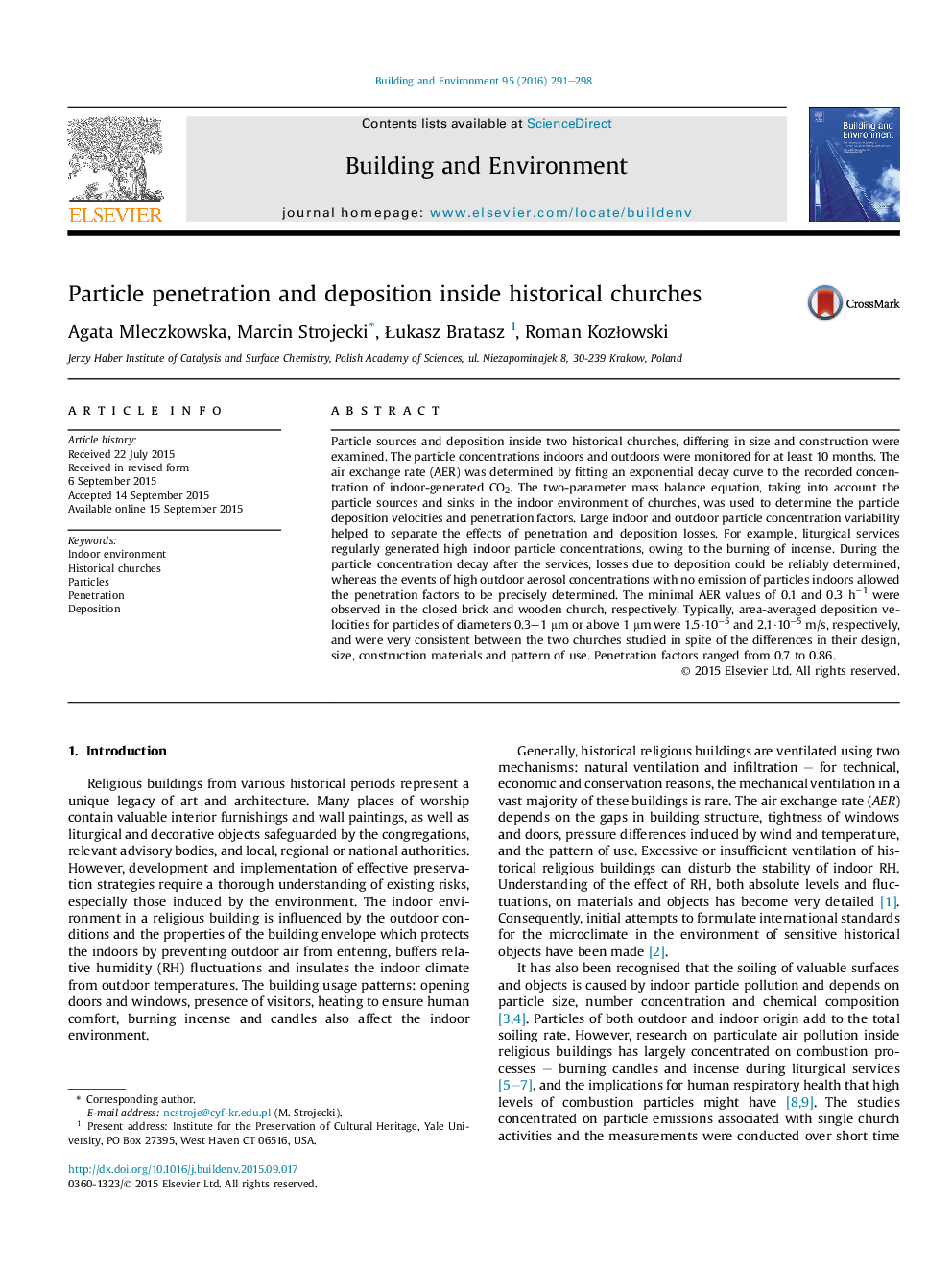| کد مقاله | کد نشریه | سال انتشار | مقاله انگلیسی | نسخه تمام متن |
|---|---|---|---|---|
| 247775 | 502526 | 2016 | 8 صفحه PDF | دانلود رایگان |
• Particle sources and deposition inside two historical churches were monitored.
• The air exchange rate was determined using indoor-generated CO2.
• The system of measurement provided robust values of the deposition loss rate.
• Particle deposition velocities were very consistent between the churches studied.
Particle sources and deposition inside two historical churches, differing in size and construction were examined. The particle concentrations indoors and outdoors were monitored for at least 10 months. The air exchange rate (AER) was determined by fitting an exponential decay curve to the recorded concentration of indoor-generated CO2. The two-parameter mass balance equation, taking into account the particle sources and sinks in the indoor environment of churches, was used to determine the particle deposition velocities and penetration factors. Large indoor and outdoor particle concentration variability helped to separate the effects of penetration and deposition losses. For example, liturgical services regularly generated high indoor particle concentrations, owing to the burning of incense. During the particle concentration decay after the services, losses due to deposition could be reliably determined, whereas the events of high outdoor aerosol concentrations with no emission of particles indoors allowed the penetration factors to be precisely determined. The minimal AER values of 0.1 and 0.3 h−1 were observed in the closed brick and wooden church, respectively. Typically, area-averaged deposition velocities for particles of diameters 0.3–1 μm or above 1 μm were 1.5·10−5 and 2.1·10−5 m/s, respectively, and were very consistent between the two churches studied in spite of the differences in their design, size, construction materials and pattern of use. Penetration factors ranged from 0.7 to 0.86.
Journal: Building and Environment - Volume 95, January 2016, Pages 291–298
